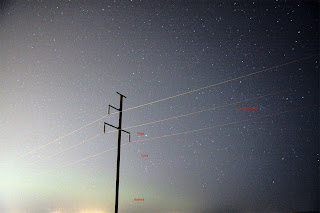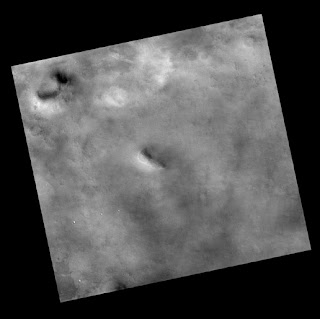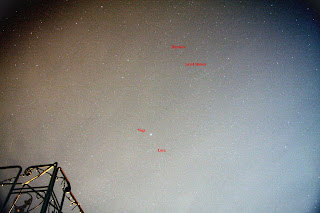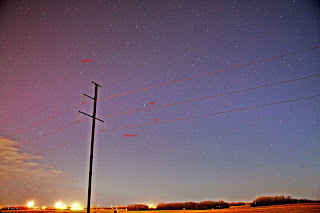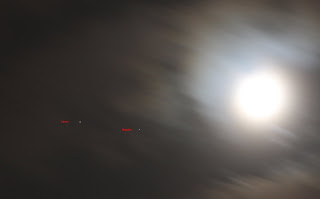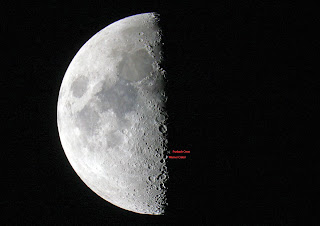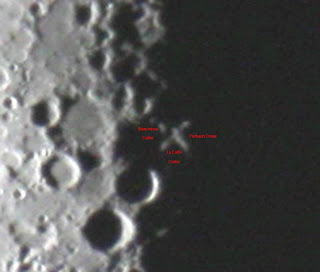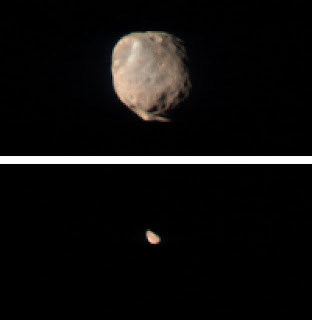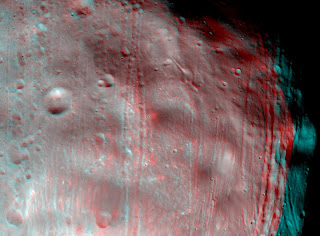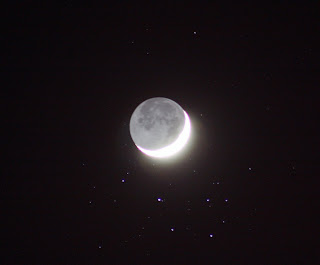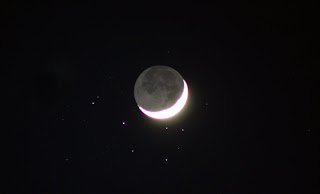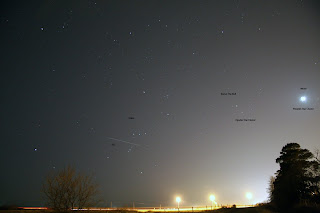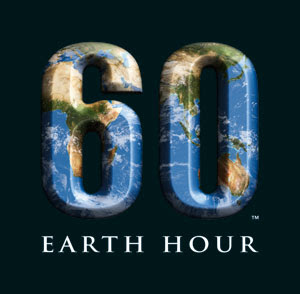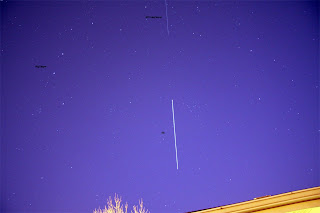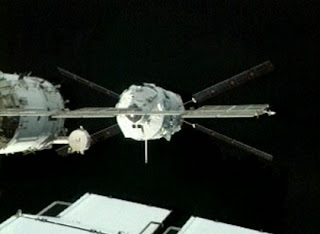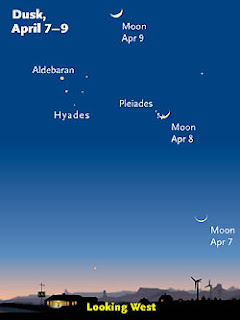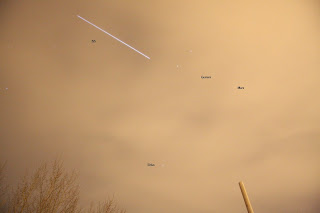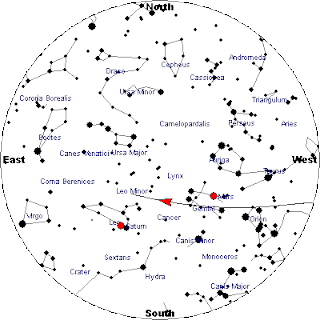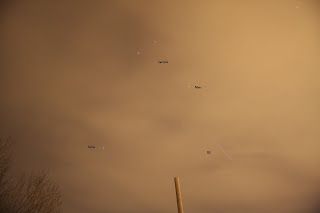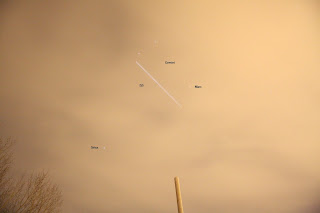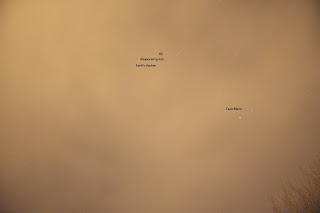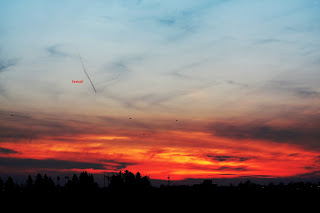
So I was out trying to image another Sunset when out of the blue a fireball appeared. To give you some idea of how rare these fireballs are, a trained observer, such as moi, can expect to be treated to one, once every 200 observing hours, factor in that it was a daytime fireball, more rare, also factor in the fact it was close to the Sun, more rare again and....catch breath... the fact that I had a focused camera ready to go, and that I would actually capture an image just after the break up with an image of the fragments, the chances of this happening, well, it boggles the mind just thinking of it, well it boggles my mind, mind you I'm easily boggled.
I get home to process the images to see what I've got, cropped and enlarged the images, turned out quite good actually, something like NASA might have on CNN, well maybe not NASA.. or CNN, but you get the idea.
Fireballs come from a group of particles bigger then the usual specks of dust grains that cause your average meteor shower. They are caused by objects the size of pebbles people, unbelievable, but because of the high rate of speed they hit our atmosphere, up to 160,000 mph they create quite a show. Daytime fireballs usually have smoke trails which start at about 50 miles altitude, they usually burn out around 9-12 miles high. It is very rare that any of the meteoroid reaches the ground to become a meteorite because of something called Ablation, which is when the outer layers of the meteoroid continually vaporize due to the high speed collision with air molecules.
Just a reminder May 1st. Mercury and the Pleiades meet low in the NW. sky 45 mins after Sunset
I'll leave you now with an animated gif of my unbroke fireball.



